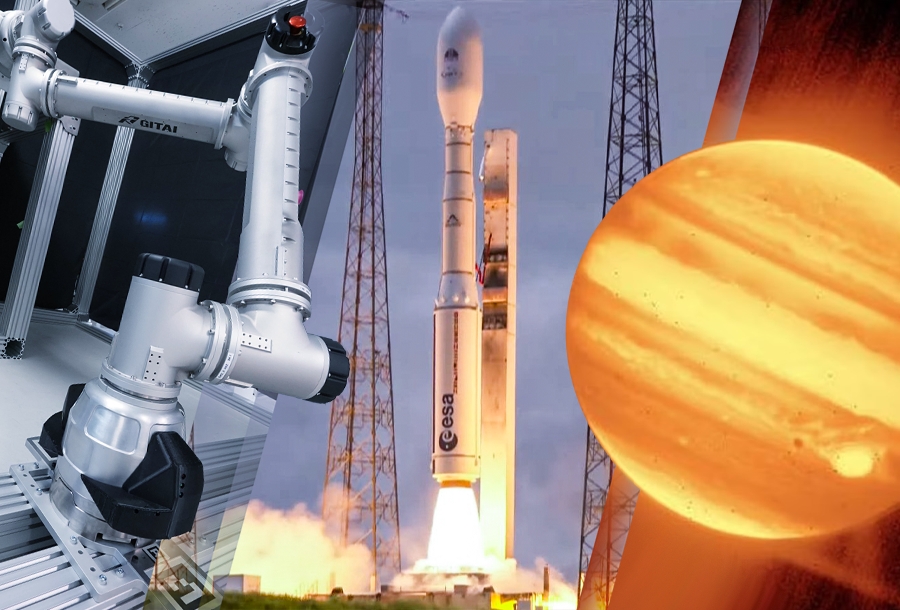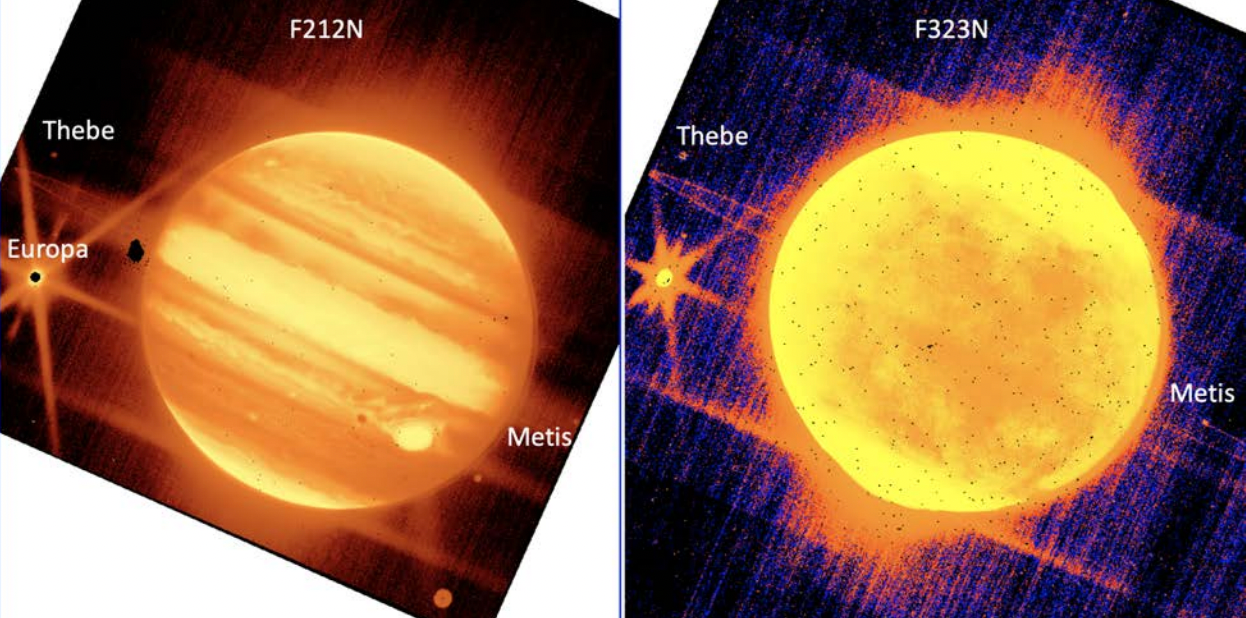Selection of the most interesting space news for breakfast: Japanese startup to demonstrate the capabilities of a new robot manipulator on board the ISS. James Webb photographed Jupiter, and we tell you what a supermoon is.

- russia threatens ISS European robotic arm after ExoMars termination
- Rocket Lab launches US spy satellite to orbit
- Japanese startup to demonstrate a robot manipulator on board the ISS
- Success Vega-C’s debut launch
- China launched a data relay satellite into geostationary orbit
- James Webb photographed Jupiter
- What is a supermoon? (article)
russia threatens ISS European robotic arm after ExoMars termination
The European Space Agency has officially ended cooperation with russia on the ExoMars mission. This statement provoked a sharp reaction from the head of Roscosmos, dmitry rogozin. In a message on the Telegram social network, he accused Aschbacher of “sabotaging” the ExoMars joint mission. Also, he promised to achieve the return of the Kazachok platform, which was in Europe at the time of the suspension of cooperation. Rogozin also instructed russian cosmonauts on the ISS to stop working with the European ERA manipulator, which is part of the Nauka module and is still in operation.
Rocket Lab launches US spy satellite to orbit
Rocket Lab’s Electron carrier rocket has delivered another NROL-162 spacecraft into orbit for the US National Reconnaissance Office (NRO), which manages the national park of spy satellites. NROL-162 is a joint project of the NRO and the Australian Ministry of Defense (AUS DoD).
Market News
Japanese startup to demonstrate a robot manipulator on board the ISS
Nanoracks and Tokyo-based space startup Gitai are teaming up for a second technology demonstration of a new technological development on the International Space Station.
Japanese startup GITAI plans to demonstrate the capabilities of a robotic manipulator for the first time on the International Space Station next year.
Both companies will test Gitai’s autonomous robotic system, dubbed “S2”, which will operate outside the Nanoracks Bishop Airlock gateway. This is the first private gateway that is attached to the ISS. Gitai completed its first demonstration of the autonomous robotic arm “S1” last year in the airlock. With the help of a robot, the crew carried out the assembly of structures and panels, as well as controlled cables and switches.
Success Vega-C’s debut launch
On July 13, a new Vega-C rocket was launched from the Kourou cosmodrome in French Guiana. It ended with success. The carrier successfully launched a payload in the form of seven satellites into the specified orbits.
Vega-C differs from the basic version by having more powerful engines on the first and second stages. The upper stage has also been upgraded, in particular receiving large fuel tanks. All this made it possible to increase the payload of the rocket to 2.3 tons per 700-kilometer polar orbit. The rocket has also “grown up”: its height is 35 meters, diameter 3.4 meters, weight (when refueled) 210 tons.
China launched a data relay satellite into geostationary orbit
The Tianlian II-03 satellite was launched by a Long March-3B carrier rocket. It is a Chinese spacecraft for relaying 2Gen GEO and TT&C data (telemetry, tracking and control). This data will be used for manned spacecraft and satellites with low and medium orbits.
Interesting

James Webb photographed Jupiter
On July 12, NASA published the long-awaited first images of the James Webb Telescope (JWST). They show distant galaxies, nebulae and regions of active star formation. But, as it turned out, JWST has already managed to photograph an object that is much closer to Earth — Jupiter. JWST received two portraits of Jupiter in the near infrared range. They were made by a NIRCam camera using filters at a wavelength of 2.12 microns and 3.23 microns. The exposure time was 75 seconds.
What is a supermoon? (article)
On July 13, earthlings are going to observe a supermoon once again. Now let’s figure out why there is nothing terrible or even unusual in this phenomenon.
Supermoon is such a configuration of celestial bodies, when the Moon is close to the Earth during the full moon, and hence it appears larger than usual. To understand why this happens at all, and why we don’t observe this phenomenon during each full moon, we need to understand the synodic and sidereal periods of our satellite’s rotation.
Follow us on Twitter to get the most interesting space news in time
https://twitter.com/ust_magazine
